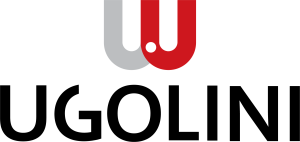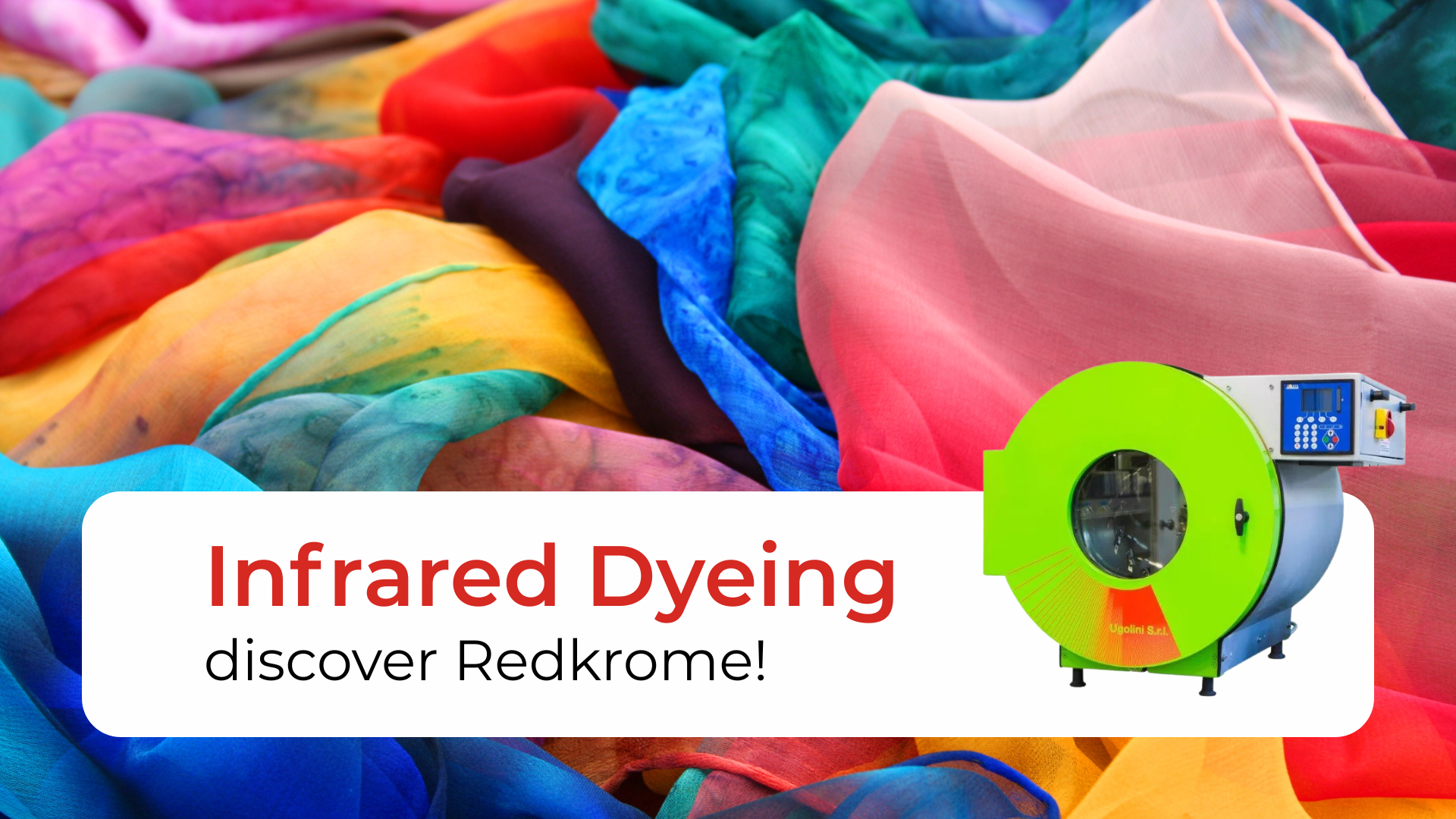Infrared dyeing is a technology that is increasingly appreciated by textile laboratories seeking to obtain accurate, repeatable and reliable results quickly. In the field of textile research and development, the need to optimise laboratory processes for dyeing samples has become a priority for both companies and research centres. In this context, infrared dyeing stands out as a cutting-edge solution, and Ugolini’s Redkrome II is undoubtedly the best choice for those seeking excellence, reliability and flexibility in sample dyeing.
What is infrared dyeing and how does it work?
When we talk about infrared dyeing, we are referring to a technique that uses the thermal energy produced by infrared lamps to heat textile samples during the dyeing process. Unlike traditional systems, such as baths heated by water bath or steam, infrared dyeing ensures more uniform and rapid heating, without the risk of localised overheating or uneven temperatures in the dye bath.
The heart of the process lies in the use of infrared lamps strategically placed around the beakers in which the textile samples are immersed. Infrared waves quickly penetrate the dyeing liquid, ensuring that every part of the sample receives the heat necessary for the fixation of the colour molecules. This system also allows for highly precise control of both the temperature trend and the heating and cooling speed, thus adapting to the needs of each type of fibre or colour recipe.
This technology not only reduces processing times compared to traditional systems, but also significantly improves the repeatability of results, a fundamental aspect when working on the development of new recipes or comparing different batches of fabric.
Advantages of infrared dyeing for samples
Adopting infrared dyeing in textile laboratories brings a number of advantages that make it the preferred choice for those seeking quality and reliability. The first and perhaps most important benefit is the ability to achieve extremely uniform colour distribution across the entire surface of the sample. The thermal precision of infrared lamps eliminates the typical problems of “stains” or colour differences that can occur with less advanced heating methods.
In addition, the speed with which working temperatures are reached allows tests to be performed in sequence, significantly reducing waiting times between tests. This translates into increased productivity and the ability to test a larger number of samples in the same working day.
Another aspect that should not be underestimated is the reproducibility of results: infrared dyeing allows the same operating conditions to be replicated on each individual sample, minimising variability due to the external environment or unwanted temperature fluctuations. This aspect is crucial for research and development laboratories, where every detail can make a difference in the formulation of a new shade or in the testing of a colour recipe.
Redkrome II: the perfect machine for infrared dyeing in laboratories
In the field of laboratory dyeing machines, Ugolini’s Redkrome II has established itself as a true benchmark for infrared dyeing of textile samples. Designed to meet the most sophisticated needs of textile laboratories, universities and research centres, Redkrome II combines a solid structure with state-of-the-art technological solutions.
The machine consists of a well-insulated dyeing chamber equipped with high-efficiency infrared lamps that ensure rapid and uniform heating of the beakers. The motorised rotating disc, regulated by an inverter, guarantees constant and silent movement of the beakers throughout the cycle, promoting perfect immersion and mixing of the samples in the dye bath.
One of the strengths of Redkrome II is its great operational flexibility: it is possible to use beakers with capacities from 100 to 1000 cc, thus responding to different sampling needs, from micro-tests to tests on larger quantities.
From a control point of view, the machine allows the temperature to be managed with extraordinary precision, ranging from 20°C to 135°C, with the possibility of setting heating gradients between 0.2°C/min and 5°C/min. This offers maximum freedom in defining dyeing profiles, allowing the cycle to be adapted to the specific requirements of each fabric and recipe.
F.A.Q. about infrared dyeing
What is an infrared dyeing machine?
This equipment is designed to heat and manage sample dyeing processes using infrared lamps. These lamps ensure rapid, uniform and controlled heating, improving the quality and repeatability of results compared to traditional systems.
What are the advantages of infrared dyeing compared to conventional methods?
Infrared dyeing allows for much more precise control of the temperature and dyeing cycle, reducing the risk of colour differences or defects due to temperature variations. It also reduces overall testing times and allows for more complex and customised cycles to be managed.
What is the temperature range that can be achieved with Redkrome II?
Redkrome II allows you to work with temperatures ranging from 20°C to 135°C, with the option of setting the heating speed according to the specific requirements of the test.
Why choose Ugolini and Redkrome II?
Choosing Ugolini means choosing a company with extensive experience in the design and manufacture of machines for textile laboratories. Each model is the result of careful technological research and continuous dialogue with industry professionals, offering tools that are truly functional for those who work daily with dyeing samples.
Redkrome II is a dyeing laboratory machine that stands out thanks to the robustness of the materials used, the care taken in its construction and the attention to customisation requirements: from the choice of accessories to the possibility of adapting the machine to different laboratory protocols. Ugolini’s technical assistance, always punctual and competent, represents an added value for those who want to work without interruptions and with maximum peace of mind.
The reproducibility between laboratory and production, guaranteed by the precision and flexibility of Redkrome II, ensures that the recipes developed can be easily transferred to industrial scale, with concrete advantages for the quality of the final product.


